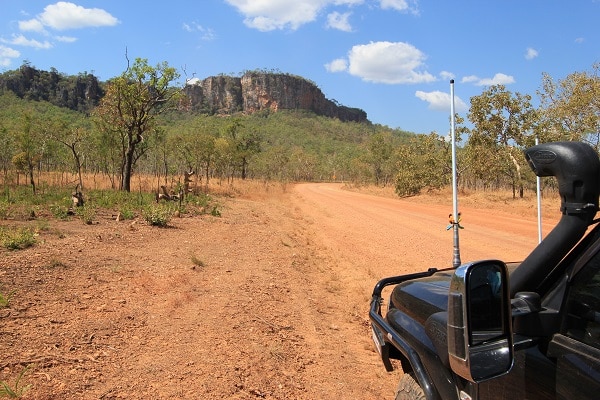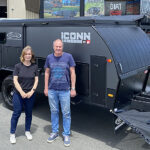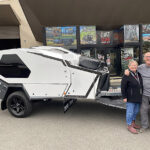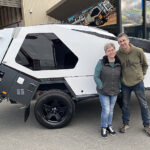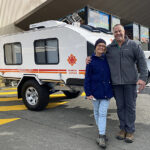Have you ever wondered how the indigenous people survived living off the land – walking around barefoot, hunting for food, dealing with wild animals, the searing sun, and even insects. Back in 2011, we gained a direct insight by participating in a wildlife safari in Kakadu.

Our safari was run by Animal Tracks at the Kakadu Buffalo Farm. The farm is setup as a tourism venture to help support the local indigenous community with the provision of food from the slaughter of water buffalo, wild pigs, magpie geese and barramundi from the property.

Providing the cultural interpretation, aboriginal guide Patsy ‘Raichiwanga’ Raglar leads our group. The itinerary is to explore freshwater billabongs, floodplains, woodland savannah and paperbark swamp, gathering food for our evening feast. Fresh water mussels, water lily, water chestnuts, green ants and bush carrots are on the menu. In addition, barramundi, buffalo and magpie geese are slaughtered prior to the tour and brought along and cooked on the open fire.

Our hunter gatherer experience begins with the harvesting of fresh water mussels from the mud. The mosquitoes in the swamp are horrendous and without a lathering of tropical strength DEET, we would be easy prey.

According to our guide, water buffalo and crocodile pose the biggest threat in the wild. The rule of survival out here is never walk out on a flood plain away from large trees, particularly near long grass, where boars or buffalo can be sleeping in a wallow.

Despite their size, buffalo can move at a lightning pace, with their wide hoof able to displace mud and water much quicker than human feet. We keep an eye out for cattle egrets through the foliage, often perched on the buffalo’s back, giving away their presence. A key survival strategy is to find a substantial tree to climb, keeping in mind that buffalo strengthen their neck muscles by pushing on trees, so if in doubt, think big! In most cases, buffalo will run away when sighted by a vehicle, but it pays to be alert. A dismissive look can quickly turn into a charge.

We search for bush medicines, with Patsy removing paperbark using a metal rod, in search of green ants. Rolled into a ball, the ants can be eaten to relieve flu symptoms. A small taste doesn’t inspire us to get sick anytime soon!

As enticing as a walkabout sounds, an open sided Landcruiser Troop Carrier is our transport, ferrying us from one location to another while protecting our group from marauding wildlife.
By the end of the day, our weary bodies are longing for relaxation, food and billy tea. Our feast is set beside a huge wetland, populated by hundreds of magpie geese. Using traditional aboriginal cooking methods, our feast is prepared. The geese are plucked, damper prepared, and meats cooked. Bush carrots, fresh water mussels, chestnuts and water lily are also served.

For those who prefer to eat things they recognise, the damper and billy tea are easy favourites.

After dinner, animal dung is tossed on the fire to keep the mozzies tolerable! It doesn’t sound particularly inviting, but it’s all part of the experience to see how another culture lives.

Without a doubt it’s been the most interesting activity during our stay in Kakadu. And we’ve done a swag of other interesting things including fording a crocodile infested river, trekked through beautiful scrubland, and swum under waterfalls.
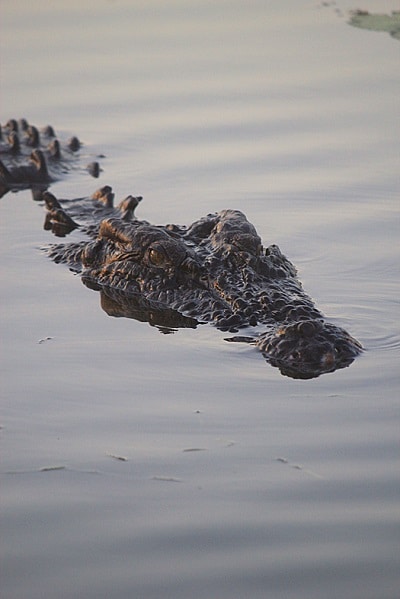
Those who say Kaka-don’t must have missed the real Kakadu. The bush camps are naturally beautiful, as is the surrounding landscape with tall escarpments with views across the plains. Activities such as the Animal Tracks Safari just take it to the next level. It’s Kaka-do all the way. Put it on your bucket list!
